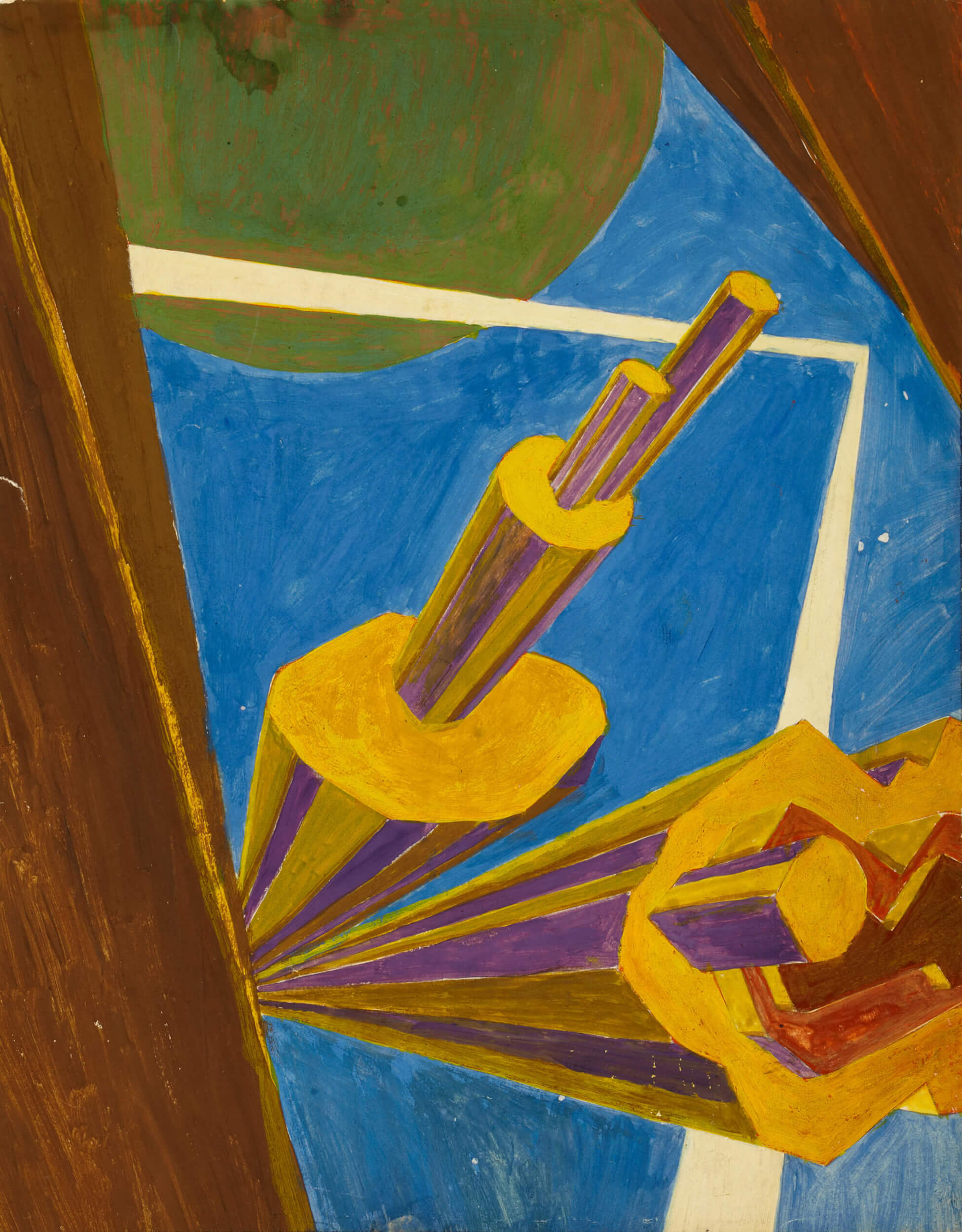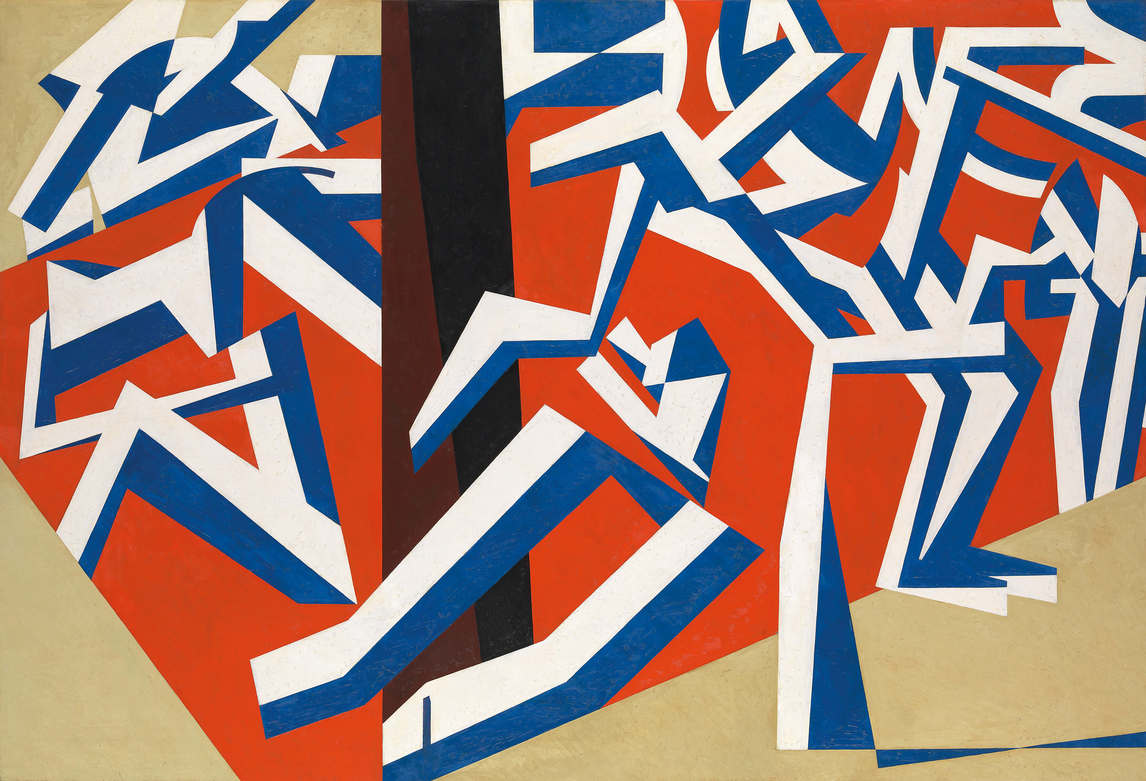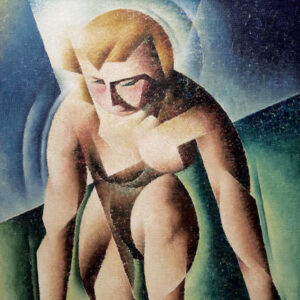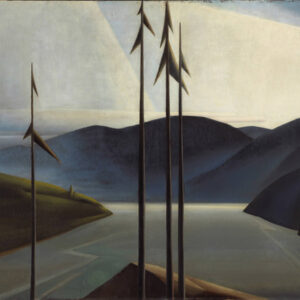Oozles c. 1922-24

Bertram Brooker, Oozles, c.1922–24
Tempera on paper, 22.9 x 17.7 cm
The Robert McLaughlin Gallery, Oshawa
Brooker created several tempera paintings called Oozles, and this is one of the earliest surviving pieces by that name. A gap of approximately a decade separates Ultrahomo, c.1912–13, and Oozles. Brooker probably turned to making abstract art as a result of his profound mystical experience at Dwight, Ontario, in 1923. Abstraction became the appropriate way for him to represent his spiritual transformation. This image displays the artist’s fascination with colourful geometric forms. Compared with his future work, Brooker’s small, early abstracts (among them Noise of a Fish, c.1922–24) are somewhat raw and have a hurried, unfinished look. In these works, it seems, he was teaching himself how to paint.

In its reliance on strong, sharp verticals and horizontals and bright, contrasting colours, Oozles appears Vorticist in style. That short-lived British group used violent zigzags and brilliant colours to establish a modernism in revolt against past traditions. Brooker likely encountered Vorticist works in reproduction in books or periodicals.
According to the Oxford English Dictionary, “oozle” means to trickle or move slowly. Brooker’s title is ironic, since all elements in the painting seem to be moving at breakneck speed. Noise of a Fish is likewise a whimsical title: according to Brooker’s son, Victor, it was inspired by the pattern created by the light in a hallway at night, seen around the corner of a bedroom door. Brooker’s abstracts also emphasize what he called “dimensionality,” which refers to his attempt to establish a new concept in rendering space. As such, the early tempera abstracts, which mark a distinct period in his career as a visual artist (one that lasted from 1922 to 1924), are the artist’s first attempts to access the fourth dimension: “a new and puzzling illusion of space that is foreign to normal visual experience,” an arena in which his goals as an Ultimatist could be reached.
According to Ann Davis the small temperas from 1922 to 1924 can be seen as “preparatory pieces” for larger canvases, such as Sounds Assembling, 1928. Oozles is an apprentice piece and a forerunner of Brooker’s work five or six years later. It and Noise of a Fish are Brooker’s first attempts to make abstracts. He likely appropriated Vorticist techniques because he thought that this form of abstraction would assist him in creating the appropriate illusionistic space. Later, he would try to enter this realm without directly referencing the work of any contemporary movement.

 About the Author
About the Author
 More Online Art Books
More Online Art Books
 Acknowledgements
Acknowledgements